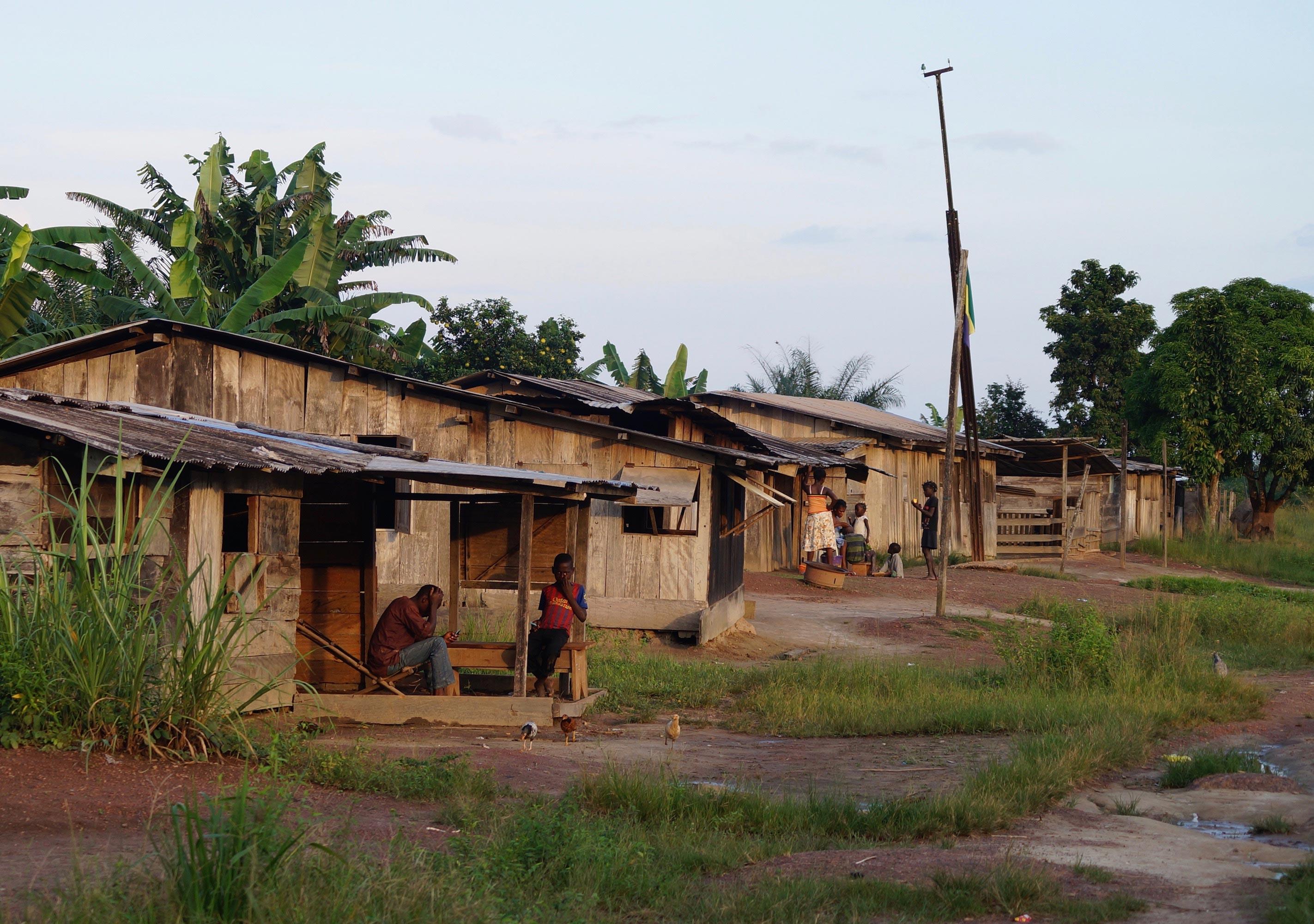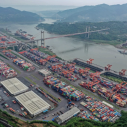Community-based ecotourism in Gabon, Central Africa
archive


Gabonese ecotourism project members conduct training (photo: Naoki Matsuura)
Community-based ecotourism in Gabon, Central Africa
Gabon is a central African country with rich biodiversity. Rainforests comprise more than 80% of the country’s land and are important habitats for wildlife, including endangered species such as forest elephants and great apes. Gabon’s abundant natural resources, namely oil, minerals, and timber, have been the vehicles for its economic development. However, recent concerns about natural resource depletion have led the government to shift policies away from natural resource exploitation towards environmental conservation and ecotourism.1
Ecotourism emerged in the 1980s as an alternative form of tourism focused on community-based conservation and development.2 It differs from the previous model of mass tourism in that it aims to reduce poverty and inequality while conserving the natural environment and traditional culture. Many nature-rich developing countries have implemented ecotourism development projects, but some critics believe that ecotourism’s inherent Western capitalist structure does not improve local livelihoods.3 In fact, several negative cases suggest that some tourism development projects benefit only government authorities and private companies, while marginalizing the local poor. It is highly possible that ecotourism could foster social inequality contrary to its initial purpose, especially in many African countries with poor governance.
Given this negative potential, it might be said that designing ecotourism projects centered on local capacity development and the improvement of local livelihoods is vital. It is important to understand the cultural and social characteristics of local communities and establish collaborative relationships between different stakeholders based on local contexts. With these issues in mind, this essay discusses the lessons learned from an ecotourism development project implemented in a Gabonese national park since 2015, highlighting the impact on the local community’s social structure. The research is tied to my participation in the project as an academic consultant for the Japanese government, which provided financing for the project. Overall, the project was successful, suggesting that it is possible to develop a framework that integrates conservation and development by means of ecotourism with strong local participation if the local contexts are well-understood and if productive, collaborative relations exist among all stakeholders.
Local People around the Moukalaba-Doudou National Park
The Moukalaba-Doudou National Park (MDNP) is located in southwestern Gabon and comprises an area of 5,028km² of forests and savanna. Established in 1962 as the Moukalaba-Dougoua Reserve, the area was renamed in 2002 when the Gabonese government created thirteen national parks (see Figure1).
Inhabitants of the region belong to western Bantu language groups (Punu, Vungu, and Varama). These groups are thought to have migrated from the Congo several hundred years ago and are currently distributed from central and southern Gabon to the south of the Republic of the Congo.4 The local society is highly mobile and egalitarian. Because residents have a matrilineal descent system and patrilocal residence rules, there is a lack of congruence between residence and lineage in their society. Clan alliance is more important than territoriality. Ethnic categories are less important to the local people, and the primacy of clan allegiance goes beyond ethnic boundaries. The main livelihood consists of slash-and-burn-agriculture supplemented by fishing and hunting,5 and wildlife is a food resource that has significant cultural value. The society prohibits eating great apes because the people regard them as close relatives. Family groups have animal totems and animal folk tales are a pervasive feature of local culture.

Figure 1. Research area
In terms of historical background, logging operations aimed at global markets were carried out in the region by a Gabonese logging company from the 1960s to the 1980s. Workers from diverse ethnic groups from all over Gabon and other countries were employed. After the logging base closed in 1989, much of the infrastructure was abandoned and a rural exodus took place. The population fell sharply to a low level of 0.8 persons per square kilometer.6 The number of young people in the region decreased most significantly. While many left the area, various organizations launched scientific research and development projects from the late 1990s onward, and nature conservation projects have expanded since the creation of the national park in 2002. A locally based NGO, PROGRAM (Protectrice des Grands singes de la Moukalaba), established in 2004, engages in conservation and local development activities by promoting ecotourism.
Due to the closure of logging operations, there are few wage labor opportunities other than employment in conservation and research projects. Education and welfare conditions are also unfavorable (Photo 1). And agricultural endeavors are complicated due to an increase in crop raiding by wildlife (elephants and great apes) that are protected by government conservation policies. Although human-wildlife conflicts are on the rise, it is difficult to establish effective damage mitigation systems. Therefore, local people are ambivalent about wildlife. Although it is culturally valuable and attracts researchers, conservationists, and possibly tourists, wildlife simultaneously threatens local livelihoods.

Photo 1. A village at the border of Moukalaba-Doudou National Park (photo: Naoki Matsuura)
Scientific Research and Ecotourism Development Project
Since 1999 primatologists from Japan have been conducting long-term ecological studies on western lowland gorillas in the MDNP and have succeeded in habituating a group.7 A larger-scale scientific research and development aid project was conducted with Gabonese and Japanese participants from 2009-2014, in which I took part as a cultural anthropologist. The experience and knowledge of the local context that we gained from these studies then enabled us to launch an ecotourism development project in partnership with a Japanese ecotourism consultant and Gabonese stakeholders representing government agencies, a research institute, and a local NGO. The first phase of the project ran from 2015 to 2017, with a second phase now underway.
The ecotourism project aims to improve livelihoods in part by training locals as ecoguides with interpretive and administrative skills as well as a broader awareness of the ecotourism economy. The latter helps to empower local residents to ensure that revenues flow into the community—thereby increasing social and economic equality—rather than into the hands outside actors.
[I]t is possible to develop a framework that integrates conservation and development by means of ecotourism with strong local participation if the local contexts are well-understood and if productive, collaborative relations exist among all stakeholders.
According to some studies, the key to success is an interpretation method in which local people are aware of the value of their natural and cultural resources, and actively demonstrate them to tourists. This method also mitigates negative impacts for wildlife, particularly great apes. Instead of depending on direct observation, local guides provide narratives about great apes that reduce the amount of direct contact, which lowers the stress on the apes and minimizes the risk of transmitting zoonosis.8
Achievement and Challenge in the Project
In the first phase, we conducted training for research assistants and local NGO staff to become ecoguides using an interpretation method. We evaluated natural and cultural tourism resources and designed model tour programs. During seven on-site training sessions, ecoguide candidates and most villagers expressed interest and participated positively. In the ongoing second phase, we are trying to establish a local association for ecotourism promotion and to construct an ecomuseum in the village (Photo 2). We aim to apply human capacities and natural and cultural tourism resources developed in the first phase of the project. It can be contended that without the base of collaboration cultivated through the long-term research project, it would have been more challenging to gain locals’ trust in the establishment of the ecotourism project. We work with a reframed understanding of “community,” seeing the latter as an inclusive concept referring to local inhabitants and all other stakeholders, including researchers.

Photo 2. Ecoguide training program (photo: Naoki Matsuura)
Despite some successes, new problems are arising. Conflicts have broken out between participants in a training program in the village, whose residents complained that travel expenses were only paid for participants from town even if the latter do not ordinarily contribute to village work. In addition, some local NGO staff resigned and began hosting tourists independently despite the lack of a proposed management and revenue sharing system. Locals’ capacity for promoting and managing ecotourism has been advanced through training programs, but some of them use these skills for their own business purposes. As a result, competition for guests among local tourism promoters is increasing. It is sometimes difficult to maintain cohesion and a common vision because of these emerging differences. To resolve such conflicts and improve the management system, a local association has been established and discussion among stakeholders is continuing.
Community-based ecotourism means that outside stakeholders work with local participants to develop a project design and management protocols that are suited to local conditions and sustainable over the long term. It is therefore important that all stakeholders—including researchers, local NGOs, and government agencies—collaborate with each other to solidify the community base and encourage local initiative.
1. Laurance, WF., Alfonso A., Lee, M., & Campbell, P. (2006) “Challenges for Forest Conservation in Gabon, Central Africa.” Future 38: 454-470.
2. Fennell, DA. (2007) Ecotourism. London: Routledge; Honey, M. (2008) Ecotourism and Sustainable Development: Who Owns Paradise? (2nd Edition). Washington DC: Island Press.
3. Ibid.
4. Perrois, L., & Grand-Dufay C. (2008) Punu (vision of Africa series). 5 Continents Editions, Milan.
5. Matsuura, N., & Moussavou GM. (2015) “Analysis of Local Livelihoods around Moukalaba-Doudou National Park in Gabon.” Tropics 23(4): 195-204.
6. Thibault, M., & Blaney, S. (2003) “The Oil Industry as an Underlying Factor in the Bushmeat Crisis in Central Africa.” Conservation Biology 17(6): 1807-1813.
7. Ando, C., Iwata, Y., & Yamagiwa, J. (2008) “Progress of habituation of western lowland gorillas and their reaction to observers in Moukalaba-Doudou national park, Gabon.” African Study Monographs, Supplementary Issue (39): 55-69.
8. Takenoshita, Y. (2015) “From vision to narrative: A trial of information-based gorilla tourism in the Moukalaba-Doudou national park, Gabon.” Tropics 23(4): 185-193.



